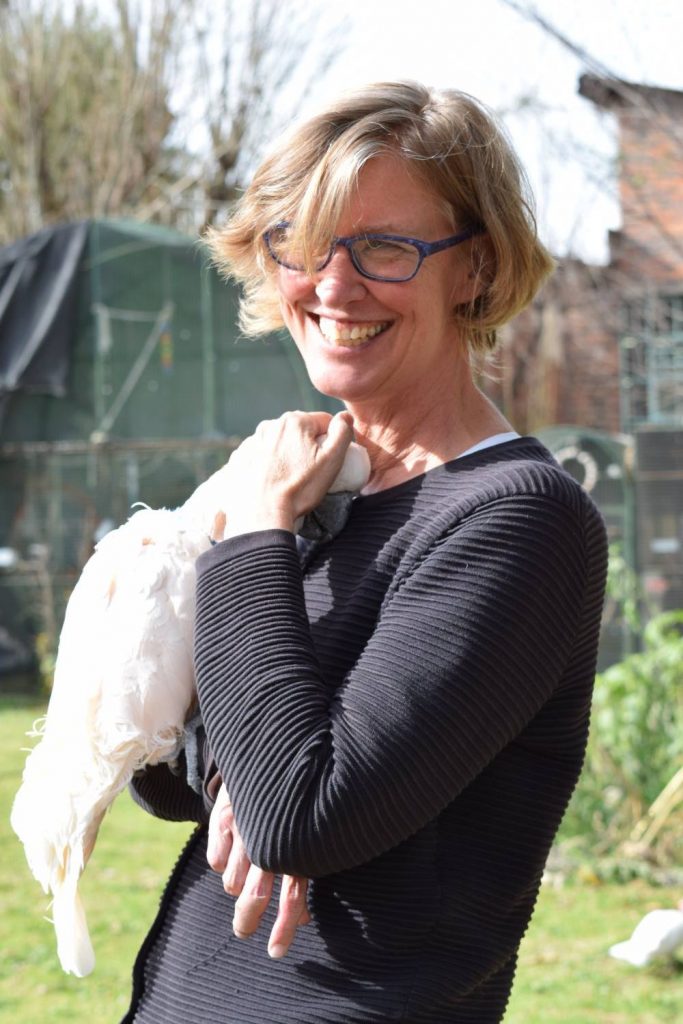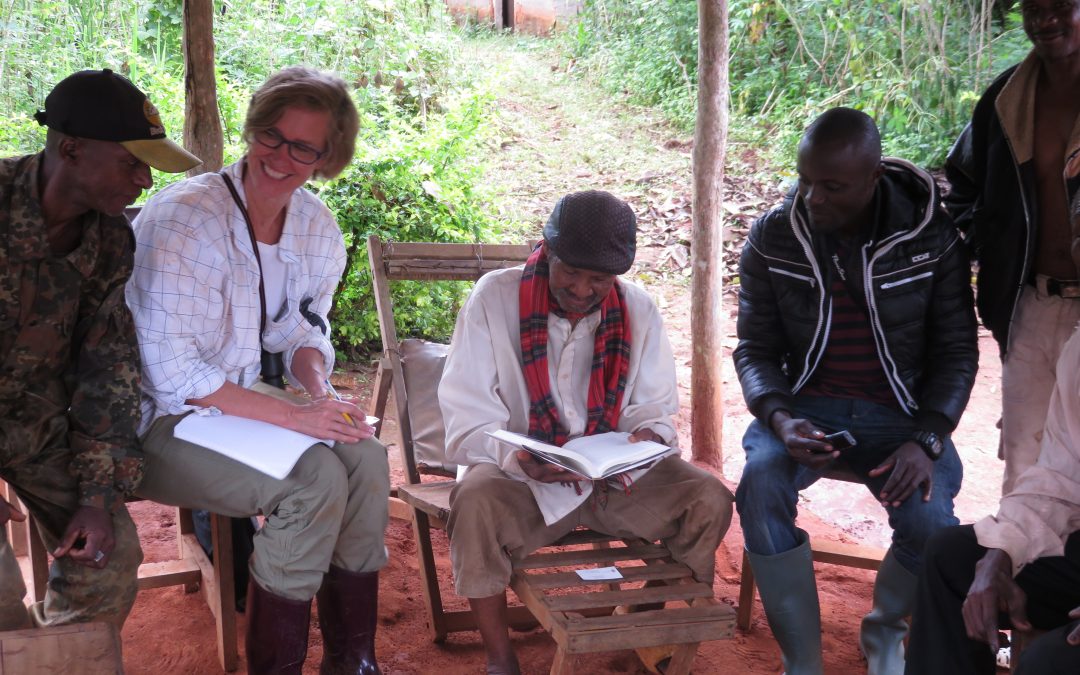Our guest today is Nancy Jacobs is Professor of History at Brown University. The topic of our discussion is based on her third book, third book, Birders of Africa: History of a Network (Yale University, 2016. Her current work is on the “Global Grey Parrot.” She specializes in South Africa, colonial Africa, the environment, knowledge, and biography. Her recent work links her to birds

It was an examination of the politics of knowing birds in colonial Africa. Review here and below. The Black Birders Who Made White Ornithologists Famous
Her current book project, a work of animal history, is “The Global Grey Parrot,” under contract with the University of Washington Press). It puts a charismatic African animal (Psittacus erithacus and Psittacus timneh) at the center of world history. Through biological and historical research as well as fieldwork, a fraught interspecies politics has emerged. It begins in African forests before 1500 and then follows the species to other continents.
Parrots can produce knowledge and culture, but isolated in captivity, they could not. Now, in the Anthropocene, parrots are bred in agro-industrial facilities, trafficked as commodities, and increasingly consigned to human spaces. When we see parrots as historical actors, we recognize that were making worlds all along. Recognizing this will perhaps help humans become better companions.

Questions and timeline
1:02 Let’s begin with your current work on the grey parrot. Can you tell us a bit about your forthcoming book. What’s it about and why did you choose this topic?
She talks about how parrots are unique, intensely social, really political, and we look at parrots as pets. Parrots on the other hand, are look for flock-mates, they have a capacity for world making.
4:05 You wrote a terrific book about the birders of Africa. Can you tell us about the broad sweep of the book before I get into details.
She talks about three different forms of birding: vernacular birding, ornithology, and recreational birding. Classification of science and birding. Bruno Latour. Knowledge systems. How knowledge circulates. Vernacular knowledge not linked to author. Travels in an uncontrolled way. Science is different– building ‘hard facts’ and authorship into knowledge. Recreational birders consume knowledge.
6:55 We talk about knowledge and context. Latour talks about “centers of calculation” such as museums and universities. It was an Imperial project in 19th century Europe. Classification and taxonomy was disconnected from locality.
8:20 Your book begins with some of Africa’s spectacular birds. Walk us through some of them.
She talks about how rollers and bee eaters (not present in the US) are more colourful than in the US. Migratory birds. She talks about the Greater Honeyguide and its mutualistic symbiotic relationship with honey collectors. Bird leads the person to the hive. Person breaks it open. Bird has access to the beeswax and the person to the honey. Ethnographers, ornithologists and anthropologists have studied this. Found that this is not innate behavior of the bird– it is learned behavior. Very efficient for both people and birds. This is reducing as people buy sugar from stores instead of following the honeyguide to get honey. People no longer are willing partners to the bird.
12:03 We talk about Gloger’s rule– the closer you are to the tropics the more colourful you are.
12:30 Talk about how birds in Africa are part of the culture. Nancy says: There is no “African” way of knowing birds. Birds are thought to have influence over human life. They raid crops, tell us about seasons by showing up when we need to plant our crops. Watching birds can help predict the future. Augur death– as with owls. She talks about Jan Vansina.
15:00 We talk about birds and augury, and auspiciousness. I ask her about augury. She talks about how people can always links between birds and events.
16:00 She talks about birds and superstition. Owls. Vernacular belief in Southern Africa. The lightning bird. Nobody has seen this. But it has powerful connotations in the culture. These tend to be large ground-dwelling birds: hamerkop, Southern ground hornbill, the introduced American turkey.
18:00 We talk about Gods, spirits and birds. Birds and power.
19:15 Birds in pharmacology. The gray parrot’s red tail is thought to be powerful as a love charm. Parrot’s tongue is good for speech defects. “Sympathetic” idea. Doves as love charms because they are seen in pairs. Eagles for vision. Attributes of a creature are used in pharmacology.
20:00 We talk about peacocks as a love charm. Of Krishna’s crown that has peacock feathers. Birds in literature and mythology. Find the characteristics that you want to portray and see which bird behavior connect to our value system.
22:00 Birds and power. Parrot feather and worn in Central Africa as a hat. Iconography and power. Zimbabwe and how eagles represent political power. We talk about hornbill feathers worn in the headdress.
23:30 How about Africa’s hunting traditions with respect to birds. Talks about adepts and savants. African adepts and how they worked with tribal chiefs and later with ornithologists.
27:20 Please talk about the binomial system. How are these indigenous approaches to naming different from the European way.
She talks about vernacular naming traditions, which don’t care about taxonomies. Linneaen systems and how birds are organized. Binomial systems based in Latin and Greek. “No barbaric names in scientific taxonomy,” per Linnaeus. Even English was considered sketchy. There are African vernacular names that made it to scientific taxonomy such as the white-browed sparrow-weaver which is P. Mahali.
In her book, she talks about Linnaeus, Levaillant…and other scientific namers. She shows fascinating sides to them with respect to birds. How were their approaches different.
30:30 She talks about what has been lost. Ways of interacting with each other– the vernacular birders and the European ornithologist. Atlantic slave trade.
32:30 Naming conventions in the vernacular versus the binomial system. She talks about the specificity of the binomial system. She talks about the name for the gray parrot. She talks about Andrew Smith, a collector in Africa.
36:00 The culture of birding imbued with colonial politics. She talks about how people signed up with the Colonial service. How they worked with local adepts, expert hunters. The boundaries of birding.
40:00 We talk about whether naming will go back to “bird names for birds.” Whether names will be removed from people and go back to the bird.
43:00 What are some of your favorite birding anecdotes from your work? Any species you were drawn too? She talks about the Cape Wagtails.
46:00 Politics of naming in Africa and India.
52:00 Favourite bird? Hers is the cedar waxwing.


